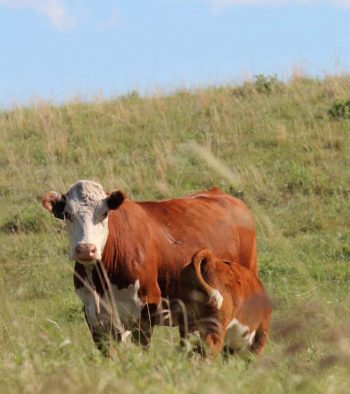People often ask how much it costs to use artificial insemination (A.I.), specifically compared to natural service. It is easy to put a pencil to paper and figure out exactly how much an A.I. pregnancy will cost compared to a natural service pregnancy. However, we should be looking at the reproductive equation from another angle.
What about the lost opportunity and cost associated with each additional day a cow or heifer spends open?
Ask any rancher what single trait is most important to profitability on their ranch, and he or she will likely say cow fertility. In a time of ever-tightening margins, a cow’s ability to have a calf, rebreed and have another calf all within a 365-day period can be the difference between profit and loss.
Why is this such an important benchmark?
Cows that do not maintain a yearly calving interval bring smaller, less uniform calves to the scale at weaning. Those cows tend to fall further behind, eventually ending up open and in the cull pen. This leads to a need for more replacement females, which increases heifer development costs.
One of the easiest ways to achieve a 365-day calving interval is to have more calves born earlier in the calving season.
Have you ever wanted to compare your operation to others?
Several benchmarking programs are available to compare production traits that directly affect profitability. One such program, Cow Herd Appraisal Performance Software (CHAPS) which is offered through North Dakota State University Extension, published their most recent set of benchmarks in September 2018 (see Table 1 below). These benchmarks are calculated from five-year rolling benchmark values for average herd performance.
Table 1. Current CHAPS Production Benchmarks
- Calves born by 21 days = 63.2%
- Calves born by 42 days = 87.6%
- Calves born by 63 days = 96.1%
- Average Daily Gain = 2.5 lbs
Having 63% of your cow herd calve within the first 21 days of calving can be a daunting task, one that is dependent on many factors. One advantage of timed A.I. is the ability to have 60% of your cow herd pregnant on the first day of breeding, which, of course, leads to more calves born earlier.
At the University of Missouri Thompson Farm, calf crop distribution was analyzed for the first 46 days over 11 calving seasons. There were three years of natural service breeding that included 526 calvings, three years of fixed-time A.I. with 585 calvings, and five years of estrus detection and A.I. with 1,040 calvings. On day 16 of the calving season, 38% of the natural service cows had calved, 54% of the estrus detection and A.I. cows had calved, and 62% of the fixed-time A.I. cows had calved. By day 21 of the calving season those numbers were 51%, 59% and 66% respectively.1

What is the true value of fewer days open?
Using the data in Table 1, calves gain, on average, 2.5 pounds per day. This means at weaning a calf born on the first day of calving season weighs 50 lbs. more than a calf born on day 21 and 100 lbs. more than a calf born on day 42. If calves are worth $1.40 per pound, that’s $70 and $140 more just for calves born earlier. An additional advantage is your calf crop will be more uniform, making them more attractive to buyers.
Fewer days open and more calves born earlier in the calving season is a sure way to boost your bottom line. If you have any questions about implementing a successful timed A.I. program on your operation, please contact your local GENEX representative.
References:
(1) Patterson, D. J. et al. “Control of Estrus Ovulation In Beef Cows”. 2016. Presentation.


